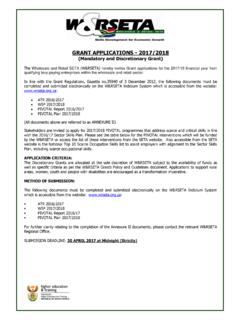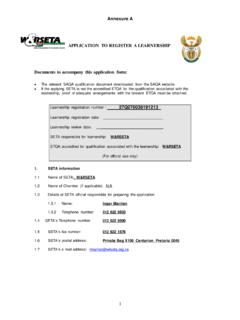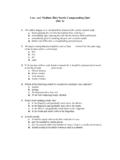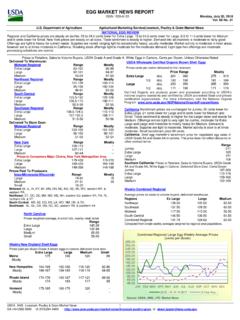Transcription of INFORMAL, SMALL MEDIUM AND MICRO …
1 ILDP 2014: ALP INFORMAL AND SMME RETAILERS IN SOUTH AFRICA 1 INFORMAL, SMALL MEDIUM AND MICRO enterprise (SMME) INFORMAL SMALL MEDIUM AND MICRO ENTERPRISES (SMME) RETAILERS IN SOUTH AFRICA ILDP 2014 ILDP 2014: ALP INFORMAL AND SMME RETAILERS IN SOUTH AFRICA 2 TEAM NAME: RATOON TEAM MEMBERS - Hilton Le Fleur - Javed Koor - Venessa Chetty - Simon Ntshangase - Reagan Mackenzie - Fatima Rawoot SIGNIFICANCE OF THE TEAM NAME RATOON Ratoon (comes from the Spanish word Retorio meaning sprout) It is a method of harvesting a crop which leaves the roots and lower part of the plant uncut to give the Ratoon. In sugarcane cultivation and in the ratooning procedure the upper part of the plant which is sweet, is first harvested and the bottom of the plant left which has buds from which new shoots develop. As a team, our journey through the ILDP programme started as ordinary leaders with talents and strengths and that is the first harvest.
2 The remaining is the leadership growth and development that we have experienced that has transformed us to shift to extra -ordinary leaders who will be able to pre-empt and identify change in our world and be able to respond to it. To be able to have a new growth that inspires and empowers change. TEAM CHARTER Our team charter is to uphold the following commitments we made to each other: - To treat each other with respect and being open, honest and transparent. - To create a learning environment in which each team member s input is valued and considered. We will be tolerant and patient with each other. - To grow and change both individually and as part of teams, no matter how uncomfortable and challenging it may become and we will remain committed to our team deliverables. ILDP 2014: ALP INFORMAL AND SMME RETAILERS IN SOUTH AFRICA 3 - To learn and consider how to apply our course content and skills to enhance every aspect of our lives.
3 This will enable us to work effectively and efficiently as a team. - To apply all ten components in the learning to think in teams module to our team engagements. - To hold each other accountable for our deliverables and to impose sanctions where deliverables are not met. - To remember to have fun and enjoy what we do, having a passion for our project. ILDP 2014: ALP INFORMAL AND SMME RETAILERS IN SOUTH AFRICA 4 TABLE OF CONTENTS 1. Executive Summary .. 5 2. Informal and SMALL , MEDIUM & MICRO enterprises (SMMEs) .. 6 Definition and background .. 6 Problem and goal statement .. 13 Relevance to the retail industry and economy .. 13 3. Research design .. 15 Quantitative approach .. 15 Qualitative approach .. 15 4. Key drivers of Informal 5. Research findings and 6. Alternate solutions to problem statement.
4 22 7. Recommended approach .. 23 7. 1 Motivation and business case .. 23 8. Implementation plan .. 34 Project timelines .. 35 Resources and budget .. 36 Success measures .. 37 9. Conclusion .. 37 10. Reference list .. 39 11. ILDP 2014: ALP INFORMAL AND SMME RETAILERS IN SOUTH AFRICA 5 1. EXECUTIVE SUMMARY South Africa is ranked well behind fellow African countries such as Ghana and Zambia in our ability to establish, sustain and grow successful new businesses (Source: Global Entrepreneurship Monitor (GEM) Report 2010). In seeking to improve the quality of life for all inhabitants, South Africa must reduce poverty, create employment and redress widening inequality both nationally and provincially. Table 1: Global Entrepreneurship Monitor (GEM) Report 2010 Current structures in the retail and wholesale sector that support informal and SMME businesses appear to be inadequate to support new business start-ups, their long term growth and sustainability.
5 The barriers and facilitators to growth and sustainability need to be clearly understood to drive economic growth within this sector. Our economy continues to grow at a lower rate compared to global and regional economies. Current levels of unemployment exceed 25%. The World Economic Forum s statistics show that South Africa s gross domestic product (GDP) grew at an average of between 2003 and 2013 and that GDP growth is projected at in 2014 and in 2015. This is about 50% lower South Africa is well behind Ghana, Zambia, Brazil and Chile in its ability to foster successful new businesses. New and established business Start-up ownership rate2 25 Percentage, 2010 New Established 25 17 17 11 13 15 12 11 5 4 2 6 6 6 South Africa Ghana Zambia Brazil Chile Source: Global Entrepreneurship Monitor (GEM) Report 2010 ILDP 2014: ALP INFORMAL AND SMME RETAILERS IN SOUTH AFRICA 6 than some of our counterparts in sub-Saharan Africa.
6 Outside of manufacturing and government, the wholesale and retail sector of our economy is the largest contributor to GDP at Additionally, informal and SMME businesses are estimated to contribute more than 50% to employment in South Africa. The barriers to entry into the informal and SMME sectors are generally lower and less capital intensive than the formal sector. This sector is generally labour intensive and using endogenous growth as a basis; it can be argued that by employing greater number of workers the level of skills in the economy can also be raised. In this paper it is argued that by targeting Informal and SMME businesses there is meaningful scope for the creation of jobs and the increasing of skills levels in the South African economy. 2 INFORMAL AND SMALL , MEDIUM AND MICRO ENTERPRISES (SMMEs) Definition and Background International Overview While the importance of the SME sector and the informal sector is acknowledged internationally, defining an SME is a challenging task, as every country has its own definition.
7 There is no single, uniformly accepted definition of a SMALL firm (Storey, 1994). Firms differ in their levels of capitalisation, sales and employment. Hence, definitions which employ measures of size ( number of employees, turnover, profitability and net worth) when applied to one sector might lead to all firms being classified as SMALL , while the same size definition when applied to a different sector might lead to a different result. This section provides a broad overview of SMALL enterprise definitions used across the globe with the objective of understanding what an SME really is. SME definitions can be broadly categorised into two, economic and statistical definitions. Under the economic definition, a firm is regarded as SMALL if it meets the following three criteria: (1) it has a relatively SMALL share of their market place; (2) it is managed by owners, or ILDP 2014: ALP INFORMAL AND SMME RETAILERS IN SOUTH AFRICA 7 part owners, in a personalised way and not through the MEDIUM of a formalised management structure; and (3) it is independent in that it is not part of a larger enterprise .
8 The statistical definition, on the other hand, is used in three main areas: (1) quantifying the size of the SMALL firm sector and its contribution to GDP, employment and exports; (2) comparing the extent to which the SMALL firm sector s economic contribution has changed over time; and (3) in a cross - country comparison of the SMALL firms economic contribution. These definitions, however, have a number of weaknesses. For example, the economic definition, which states that a SMALL business is managed by its owners or part owners in a personalised way and not through the MEDIUM of a formal management structure, is incompatible with its statistical definition of a SMALL manufacturing firm which might have up to 200 employees. According to UNIDO, the definition of SMEs is a significant issue for policy development and implementation and depends primarily on the purpose of the classification.
9 For the purposes of policy development, UNIDO generally advises countries to take into account the quantitative and qualitative indicators for SME definition. The following table summarises the main qualitative indicators that may be used in order to differentiate between SMEs and large companies. ILDP 2014: ALP INFORMAL AND SMME RETAILERS IN SOUTH AFRICA 8 Table 2: Application for Qualitative Indicators Category SMEs Large Companies Management Proprietor entrepreneurship Functions-linked personality Manager-entrepreneurship Division of labour by subject matters Personnel Lack of university graduates All-round knowledge Dominance of university graduates Specialisation Organisation Sales Buyer s relationships Production Research development Highly personalized contacts Competitive position not defined and uncertain Unstable Labour intensive Following the market, intuitive approach Highly formalised communication Strong competitive position Based on long--term contracts Capital intensive, economies of scale Institutionalised Finance Role of family funds, self-financing Diversified ownership structure, access to anonymous capital market Source: UNIDO Table 3.
10 Synopsis of SMME definitions by region BRIC EU USA ASIA(Mlysia) EGYPT GHANA BRAZIL RUSSIA INDIA CHINA RSA Industrial Commercial WORDS SMALL and MEDIUM enterprise SMALL and MEDIUM Business SMALL and MEDIUM enterprise MICRO , SMALL and MEDIUM Enterprises MICRO , SMALL and MEDIUM Enterprises SMALL and MEDIUM enterprise SMALL and MEDIUM enterprise SMALL and MEDIUM enterprise MICRO , SMALL and MEDIUM enterprise SMALL and MEDIUM enterprise SMALL , MEDIUM and MICRO enterprise # of EMPLOYEES MICRO < 10 0 < 5 1 to 4 up to 5 Up to 19 Up to 09 0 0 0 < 20 SMALL < 50 <100 5 to 50 5 to 14 6 to 29 20 to 99 10 to 49 15 to 100 0 <300 50-99 MEDIUM < 250 <500 51 to 150 15 to 49 30 to 99 100 to 499 50 to 99 101 to 250 0 300 to 2000 100-200 TURNOVER MICRO $3m 0 0 $10 k 0 0 0 <Rs50m 0 <R150k SMALL $13m 0 to< RM10m 0 $100k 0 0 400 m RUB max Rs50-60m <Y30 R2m to MEDIUM $67m 0 RM 10m to RM 25 0 $1million 0 0 1 B RUB max Rs60-99m Y30 to Y300m to R50m Source: Author s compilation from various sources The abbreviation "SME" occurs commonly in the European Union (EU) and in ILDP 2014: ALP INFORMAL AND SMME RETAILERS IN SOUTH AFRICA 9 international organisations such as the World Bank (WB), the United Nations (UN) and the World Trade Organisation (WTO).














